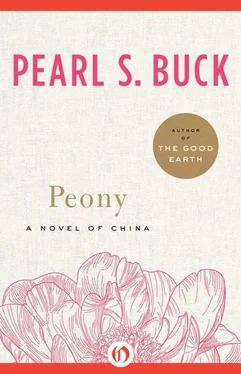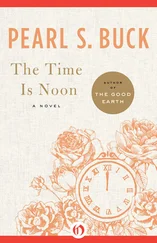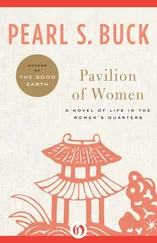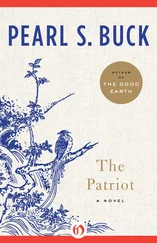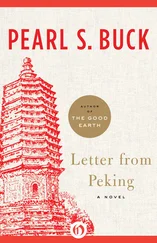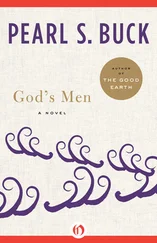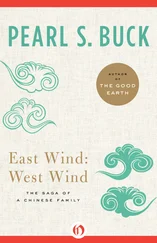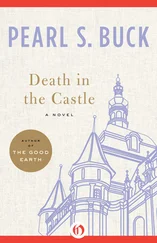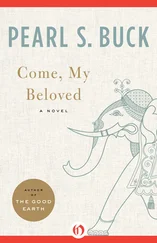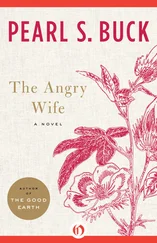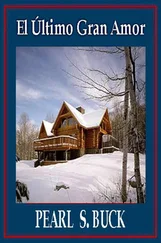Pearl Buck - Peony
Здесь есть возможность читать онлайн «Pearl Buck - Peony» весь текст электронной книги совершенно бесплатно (целиком полную версию без сокращений). В некоторых случаях можно слушать аудио, скачать через торрент в формате fb2 и присутствует краткое содержание. Год выпуска: 2012, Издательство: Open Road Media, Жанр: Современная проза, на английском языке. Описание произведения, (предисловие) а так же отзывы посетителей доступны на портале библиотеки ЛибКат.
- Название:Peony
- Автор:
- Издательство:Open Road Media
- Жанр:
- Год:2012
- ISBN:нет данных
- Рейтинг книги:3 / 5. Голосов: 1
-
Избранное:Добавить в избранное
- Отзывы:
-
Ваша оценка:
- 60
- 1
- 2
- 3
- 4
- 5
Peony: краткое содержание, описание и аннотация
Предлагаем к чтению аннотацию, описание, краткое содержание или предисловие (зависит от того, что написал сам автор книги «Peony»). Если вы не нашли необходимую информацию о книге — напишите в комментариях, мы постараемся отыскать её.
Peony — читать онлайн бесплатно полную книгу (весь текст) целиком
Ниже представлен текст книги, разбитый по страницам. Система сохранения места последней прочитанной страницы, позволяет с удобством читать онлайн бесплатно книгу «Peony», без необходимости каждый раз заново искать на чём Вы остановились. Поставьте закладку, и сможете в любой момент перейти на страницу, на которой закончили чтение.
Интервал:
Закладка:
At the outset, Madame Ezra is said to be almost fifty years old, which would mean that her own parents were members of the congregation during its heyday, described by the Jesuit missionaries in letters to the Vatican. Madame Ezra’s great love of Judaism is all the more plausible, seen in this light.
Ezra ben Israel’s family was said to be one of seventy families which came scores of years ago through Persia and India, by land and by sea, as merchants and traders, and later surnamed Zhao. This, too, would be historically accurate according to the steles. That Madame Ezra should later on declare to the Rabbi that theirs is the leading Jewish family, is all the more true, since the Zhao’s held a remarkable place in the annals of Sino-Judaic history.
The synagogue, described as falling slowly into ruin, was said to be on the Street of the Plucked Sinew. While that street today is known as South Teaching Scripture Lane, before the early 1900’s it was called just that — the Street of the Plucked Sinew. The rabbi was described as standing beside the Chair of Moses, “upon which the sacred Torah was placed. He wore long black robes and about his black-capped head was wrapped a fine white cloth that streamed down his back.” This description coincides perfectly with a photograph found in Chinese Jews, written by Bishop William Charles White, an Anglican bishop who spent almost twenty-five years in Kaifeng, from 1910–1933. Elsewhere, Pearl S. Buck’s description of the synagogue coincides exactly with that portrayed in sketches by Father Jean Domenge in 1722, which was also reproduced in Bishop White’s book. A partial translation of the 1489 stele is given as well. Thirteen Torah scrolls were said to be in the synagogue, held in long cylinder boxes. References to inscriptions by Jews from other cities in the form of vertical tablets was also made.
Where Pearl S. Buck appears to take literary license is in the time sequence of the story. Although the real last rabbi of Kaifeng was supposed to have died by 1810, she alluded to the period of the Opium War (1839–1842) for the time of his death.
Later, when David ben Ezra journeys with his whole family to Peking, it is said to be at the time of the Empress Dowager, who then asked to see his “foreign” children. Since the Empress Dowager’s influence was most prominent from 1898 to 1908, it is inconsistent with the story that a period of over fifty years could have elapsed between the time of the rabbi’s death (assuming he died during the Opium War), and David’s visit to Peking with small children.
By the end of the novel, the synagogue was finally only a heap of dust. The carvings were gone, and only three steles remained for a time, then later only two. They stood “stark under the sky” until a Christian foreigner bought them. In fact, Bishop White did buy the steles, moving them for safekeeping into the cathedral compound. But this was in the year 1912, and if, as we surmised at the outset, the story was set at the turn of the century with the real rabbi’s death, then the novel would have spanned one hundred years…
Although we are encouraged to picture Madame Ezra, the Rabbi and his children as having distinctly Western features, by the 19th century the Chinese Jews were for the most part Sinified racially. Sketches of two Kaifeng Jewish brothers of the Zhao clan around the year 1850 do show high foreheads and decidedly Semitic profiles, yet exhibit Oriental eyes and hair. Although impossible to verify, by the latter half of the 19th century most likely no Kaifeng Jews retained a strictly Western appearance.
Chronological inconsistencies notwithstanding (and perhaps even because she took such literary license), Pearl S. Buck managed to reveal the sweeping panorama of Chinese Jewish history all at once in this way through the rise and decline of Jewish observance in the Ezra family.
19th Century Contact with the Chinese Jews
The end of Peony is by no means the end of the story of the Chinese Jews, however. Contact with Kaifeng’s Jewish inhabitants resumed after a 130-year hiatus in the year 1850, when the London Society for the Promotion of Christianity Among the Jews sent two Chinese Protestant delegates (converts from Shanghai) to Kaifeng. They reported that the synagogue was in a woeful state of disrepair and that the last rabbi had died about fifty years earlier. The community had some years before petitioned the Emperor to allow them to repair and rebuild their temple, but they had received no reply. Their condition was so desperate that the delegates were able to purchase close to seventy Hebrew manuscripts and six Torah scrolls from the synagogue over the course of two visits to Kaifeng. In addition, they bought the Chinese-Hebrew Memorial Book of the Dead, which was first assumed to be a genealogy. (All of these can now be found in the Klau Library of Hebrew Union College in Cincinnati.)
The delegates invited two members of the Kaifeng community (the Zhao brothers described above) to return with them to Shanghai in order to relearn Hebrew and Judaism, with the hope of resuscitating the community upon their return. Zhao Wenkui and Zhao Jincheng were circumcised Jews, a custom still practiced in Kaifeng at that time. The latter stayed only briefly, but the former remained until his death, and was buried in the communal cemetery which 19th century Jewish emigrants had established in Shanghai.
Only a year before, a sergeant in the Chinese imperial army, Tie Dingan, wrote to the British Consul in Amoy, T.H. Layton, that eight families still existed in Kaifeng. He reported they were Chinese in appearance, but exhibited “straight features like people in the center of China.” There were no rabbis, and none could read Hebrew.
Once Jews and others outside of Kaifeng learned of their existence, attempts were made to send letters to the Jewish community, but only one was ever acknowledged — possibly the only one ever received. On August 20, 1850, Zhao Nianzi of Kaifeng wrote to T.H. Layton (in response to an 1847 letter by James Finn, a career diplomat and missionary, who was fluent in Hebrew and knowledgeable about Judaism). He described the dismal state of affairs in Kaifeng at that time, mentioning that since 1800–1810 the religion had been “imperfectly transmitted,” though religious writings were still extant. The synagogue, he mentioned, had long been without “ministers.” The structure of the synagogue itself was in ruins, and he mentioned those who were willing to mortgage or sell the synagogue and materials from the Gao, Shi and Zhao clans.
Zhao’s letter was a cry for help from the Jews of the West, as their poverty and by now general ignorance of Hebrew and most of Judaism’s religious tenets had turned them into a desperately isolated community on the threshold of total assimilation into their Chinese surroundings.
In 1860 another catastrophic flood from the Yellow River hit Kaifeng. Perhaps this marks the last time the synagogue was swept away — this time for good. For in 1866 the Reverend W.A.P. Martin visited Kaifeng, at which time he declared that the synagogue itself no longer even stood on the site at which it had been for the past seven centuries, and which, although in a dilapidated state, had been visible to the 1850 delegates.
The plight of the Jews of Kaifeng by this time is poignantly conveyed by Martin when he related learning that after the last rabbi had died, the Jews still cared enough to leave a copy of their Torah in the marketplace in the hopes that a Jew from afar who might perchance be in Kaifeng would notice it and teach them once again its contents. All he reported standing at the time was a solitary stone.
Western Jewish Contacts with Kaifeng
The first Western Jew to visit Kaifeng did so for ten days in July of 1867. Jacob L. Liebermann, an Austrian Jewish merchant, went not on behalf of a religious organization, but of his own accord, and wrote a series of ten letters to his father. He described that while the Jews lamented their degree of assimilation, they also recounted stories of a brighter past.
Читать дальшеИнтервал:
Закладка:
Похожие книги на «Peony»
Представляем Вашему вниманию похожие книги на «Peony» списком для выбора. Мы отобрали схожую по названию и смыслу литературу в надежде предоставить читателям больше вариантов отыскать новые, интересные, ещё непрочитанные произведения.
Обсуждение, отзывы о книге «Peony» и просто собственные мнения читателей. Оставьте ваши комментарии, напишите, что Вы думаете о произведении, его смысле или главных героях. Укажите что конкретно понравилось, а что нет, и почему Вы так считаете.
